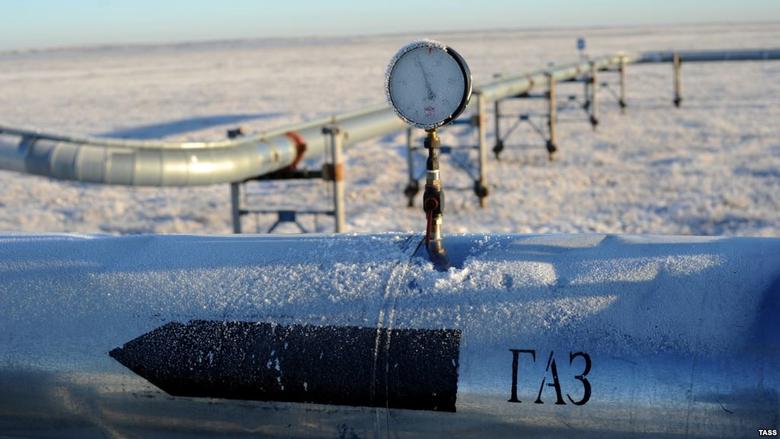
EU VS GAZPROM

Ever since Russia annexed the Ukrainian peninsula of Crimea in the Black Sea, the European Union has suddenly discovered it needs to quickly diversify away from Russian natural gas. But can the E.U. ever truly kick its main foreign gas supplier to the curb?
Here's the quick answer: nyet.
Russian natural gas accounts for roughly a third of all foreign supplied natural gas coming into Europe. Russia's biggest partner is Germany. In that state, Russia's presence is on the upswing.
Gazprom Germania, a subsidiary of the Russian state-owned gas giant, and German utility Energie Baden-Württemberg (EnBW) signed an agreement on April 24 to acquire four EnBW natural gas filling stations in the cities of Stuttgart and Nagold. The deal is supposed to be official on Friday. That acquisition gives Gazprom Germania 28 natural gas filling stations in green-loving Germany. Gazprom plans to be running 35 stations by the end of this year.
It is true that European gas buyers are looking to diversify. Energy security is an important part of a country's foreign policy strategy. So far, most of the noise on diversification has come from the former Soviet states, or from Warsaw Pact countries that have a torrid past with its Kremlin overlords.
Efforts to diversify supplies to Eastern European countries like Poland, Czech Republic, Latvia, Lithuania and Estonia, for instance, include the recent launch of the LNG terminal in Lithuania. That terminal might account for up to 20% of the country's gas imports this year, according to Fitch Ratings. The 20% figure is dependent on the eventual import of U.S. liquefied natural gas.
Then there's the new Polish LNG terminal in Swinoujscie which is supposed to be ready this summer and potentially cover almost a third of the country's imported gas needs.
It seems in those two countries, Russia's market share will shrink exponentially. Eastern Europe accounts for less than a third of Gazprom's exports to Europe. While they are important emerging growth stories for Gazprom, the real Gazprom money makers are in northern and western Europe.
In 2013, Germany accounted for 40% of Gazprom's exports to the E.U.; Turkey came in second at 26.9%. Turkey signed a deal with the Russian government recently to build a pipeline into Europe, which will be an alternative to the three pipelines that currently bring Russian gas to the E.U. via Ukraine. In third place is Italy, accounting for 25.3% of Russia's gas exports to Europe, according to the company.
It is worth noting that none of those three markets are talking about replacing Russian gas, especially Turkey. There will be a natural diversification as is the case with any free trading economy over time. But look at this: in 2013, despite there being no geopolitical tensions between Brussels and Moscow, E.ON of Germany inked an LNG deal with Canadian company Pieridae. That same year, Gazprom exported 161.5 billion cubic meters of natural gas to Europe, an all-time high.
Ebb and flow of capitalism aside, new LNG projects within Eastern Europe will not cut Gazprom out completely. They will have to rely on Russia for the bulk of the gas consumed there in the foreseeable future, Fitch said in a report on Wednesday.
The Ukraine crisis drove a wedge between Gazprom and Europe. Washington quickly moved in to drive the wedge deeper, thanks in part to its own energy strategy. As a result, Russia finally came up with a non-European strategy all its own. Gazprom is diversifying now too.
The company is already in the process of building a gas pipeline into China and is planning to start construction of a second one. To those who think the squeeze on Gazprom will hurt the bottom line, think again. The capacity of the two China pipelines will be about two-thirds of the total volume of natural gas currently being exported to Europe, Fitch said.
forbes.com





